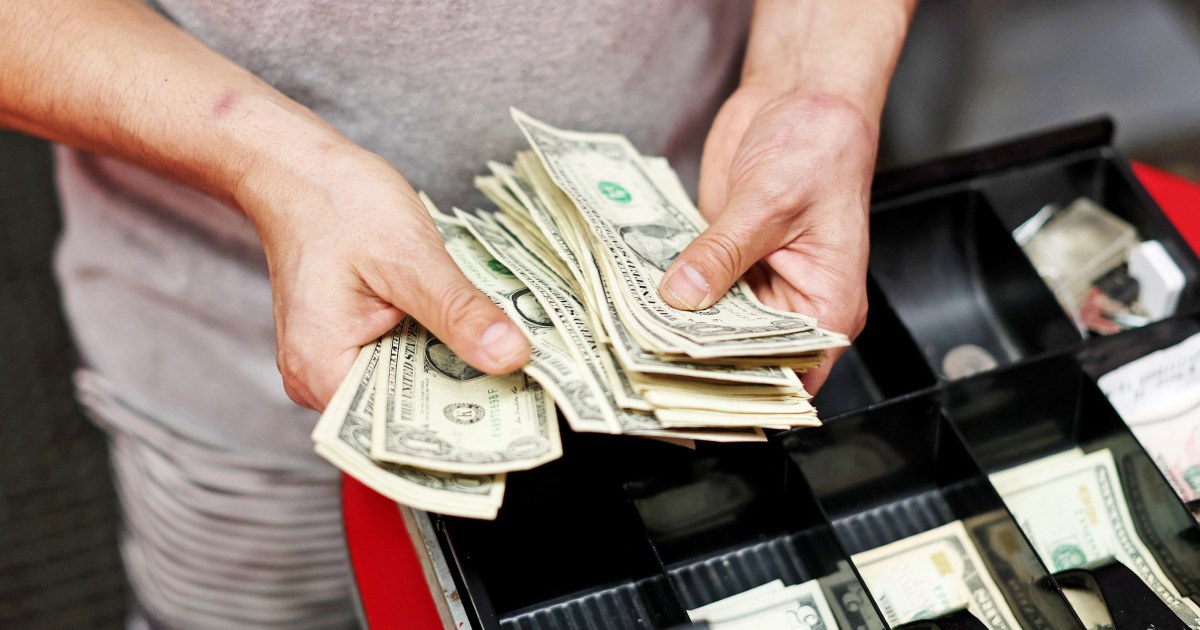
Researchers canvassing small businesses found that pay and price hikes are happening in tandem across economic sectors as the worker shortage persists into 2022.
According to a new survey from the National Federation of Independent Business, or NFIB, the net percentage of owners raising selling prices hit 61 percent — the highest since 1974, when inflation was rampant. A net 50 percent of owners are raising compensation, a 48-year high.
“We haven’t seen anything like this in our survey since the mid-1970s, and most small-business owners have never experienced anything like this,” said Holly Wade, the executive director of the NFIB Research Center. “For most small-business owners, this is a whole new environment they have to navigate — and it’s proving to be an incredible challenge.”
A survey published last week by Alignable, an online platform for small businesses, found that 60 percent of small businesses are struggling with labor shortages — and some sectors report even higher percentages. For example, two-thirds of restaurants and three-quarters of manufacturers report being unable to find workers to fill open positions, and a whopping 92 percent of assisted and senior living facilities are struggling to find employees.
“We’re definitely tracking ongoing challenges on the hiring front,” Alignable co-founder and CEO Eric Groves said. “What we’ve seen is they’re increasing their salaries and they’re paying people more, but it’s still not drawing back the volume they need.”
Analysts did note a few bright spots in the NFIB data. Bill Adams, the chief economist for Comerica Bank, said that while labor remains constrained, evidence suggests that supply chain shortages are beginning to ease, with more business owners reporting rising inventory levels and a smaller number reporting shortages.
“While small-business optimism dropped a little bit on the month, the details of the survey showed that some of the problems small businesses are facing are starting to improve,” he said.
“The context here with the NFIB survey is other data have also pointed to the supply chain logjam improving at the turn of the year,” Adams said, citing a drop in reported delivery delays and a buildup of inventory in the fourth quarter of 2021.
Wage increases are one of the factors contributing to climbing sticker prices.
That still might not be enough to hold back inflation, however. Adams said that while fewer shortages of parts and components will help alleviate price gains, ongoing wage gains, coupled with higher energy and housing costs, will continue to push inflation about the Federal Reserve’s 2 percent target for the year.
“Our call right now is for four rate hikes over the course of 2022, but risks are decidedly skewed toward a faster rate of tightening policy,” he said.
Some analysts say the Fed will have to turn even more sharply hawkish this year to tamp down inflation. Bank of America’s head of global economics research, Ethan Harris, predicted seven rate hikes for 2022 and four more next year, CNBC reported. Although he is an outlier, Harris is not alone: The CME FedWatch Tool puts the probability of seven hikes by the time of the Fed’s final meeting of 2022 at 16 percent, with a 4 percent probability that the Fed funds rate will be 2 percent or higher.
Harris cited rapidly climbing wages as one piece of evidence suggesting that policymakers will have to intercede more forcefully. January’s monthly jobs report showed average hourly earnings rising at 5.7 percent year over year.
And as long as worker scarcity persists, inflation is likely to remain a major economic headwind.
“If we can bring the inflation down and some of the wage increases survive, that will be good for workers,” said Harry Holzer, a professor of public policy at Georgetown University. “That’s a challenge,” he said, because wage increases are one of the factors contributing to climbing sticker prices.
“It does give us a sense that these issues are very much alive for small business,” Holzer said. He noted that, compared to big companies, mom-and-pop operations have fewer resources to help buffer them against challenges.
Wade said it is a battle her members are learning to fight as they go.
“The pandemic has shifted one set of problems to another set of problems. And it all happened very quickly, so small-business owners have had to adjust quickly,” Wade said. “It’s an overwhelming situation for many of them.”
Source: | This article originally belongs to Nbcnews.com










